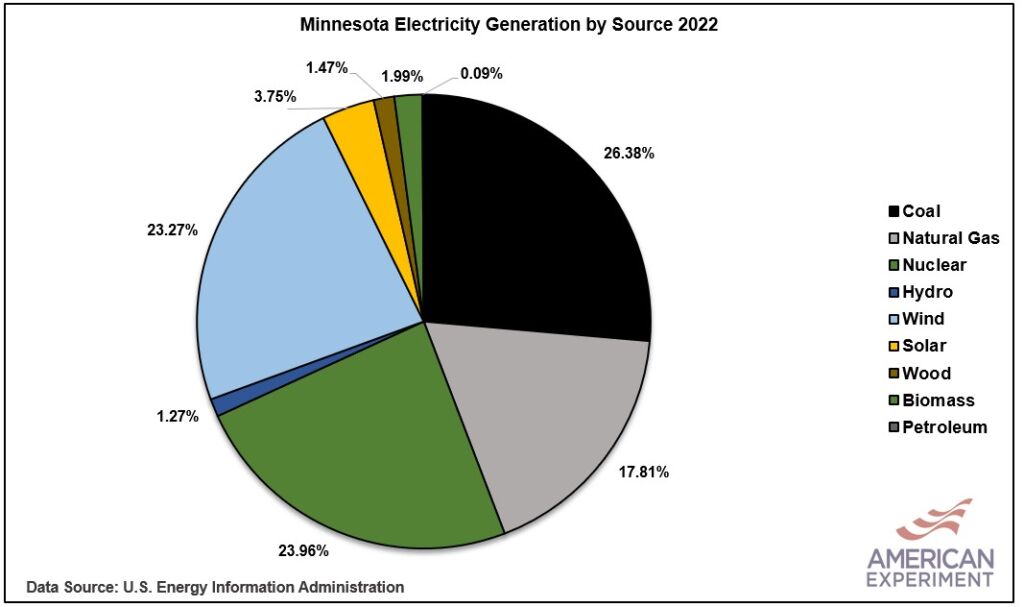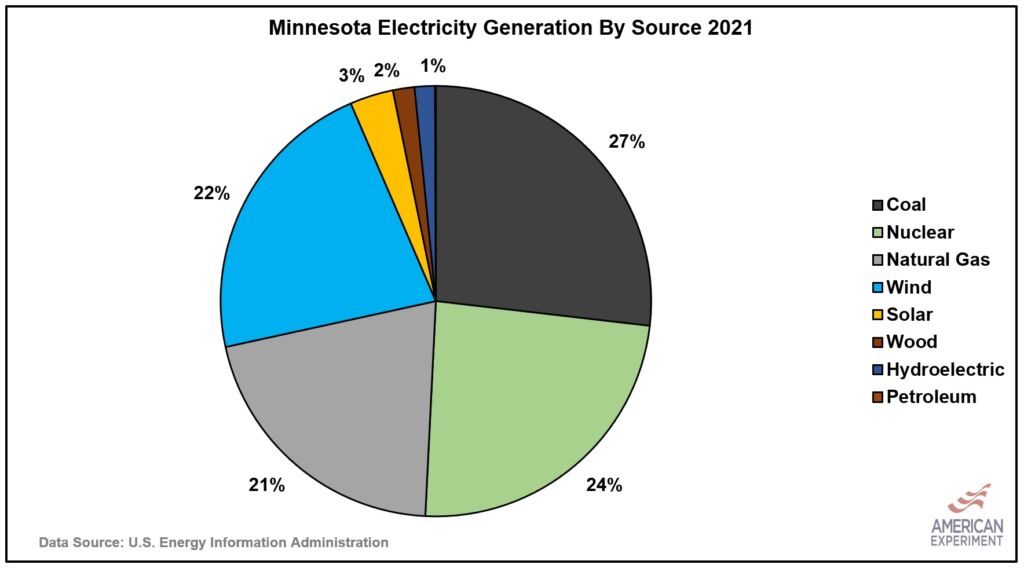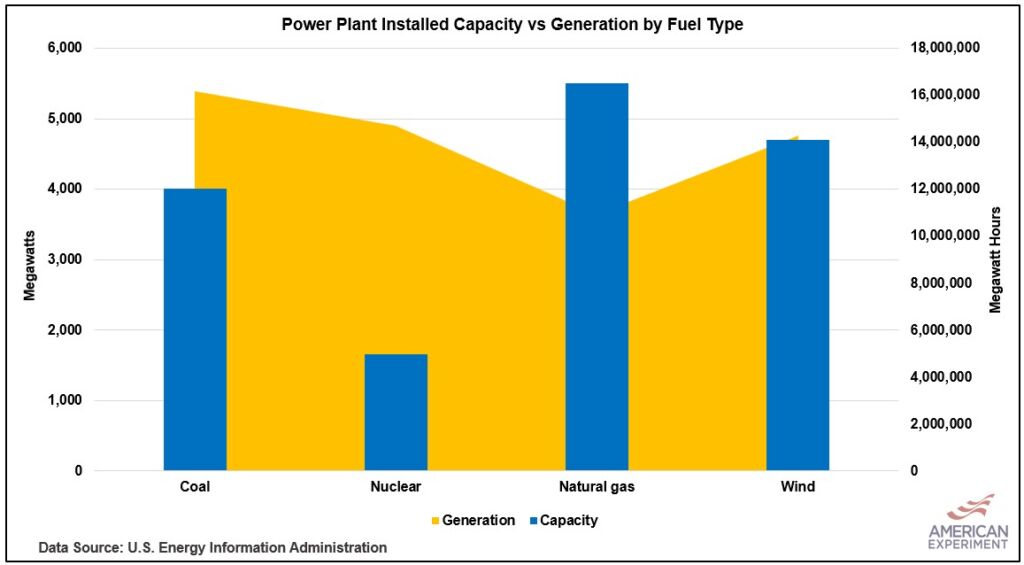Coal was king of Minnesota’s electricity generation in 2022
The U.S. Energy Information Administration (EIA) has released its December 2022 electricity generation data, which means we get our first complete look at how different electricity sources performed last year.
The graph below shows coal was the single-largest source of Minnesota’s electricity, contributing 26.38 percent of the state’s power, followed by nuclear at 23.96 percent, wind at 23.27 percent, natural gas at 17.81 percent, solar at 3.5 percent, biomass at 1.99 percent, wood at 1.47 percent, and hydro at 1.27 percent.

These figures are essentially the same as last year, per EIA data.

The most interesting thing about the 2022 data is electricity generation compared to a fuel type’s installed capacity.
The graph below compares the amount of installed power plant capacity in 2021 (2022 data won’t be available until December 2023) in blue and compares it to the 2022 generation in yellow.

This graph formatting isn’t my favorite, but the primary takeaway is the yellow line is above the blue line, then that resource is generating a lot of electricity compared to its installed capacity.
When it comes to productivity, nuclear power is the clear winner, generating a lot of electricity with a small amount of capacity. Wind, on the other hand, generated less electricity than nuclear even though there was about three times more wind turbine capacity on the grid than nuclear power plant capacity.
This is why attempts to power our electric grid with wind and solar while keeping nuclear illegal to build will ultimately be unsuccessful, leading to rolling blackouts and higher prices. In the meantime, we should keep our existing coal plants open because they provide some of the lowest-cost, most reliable power in the state.